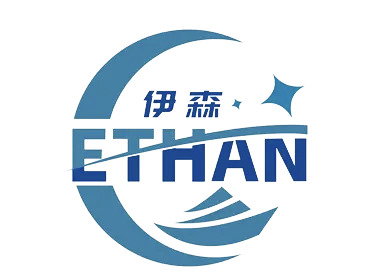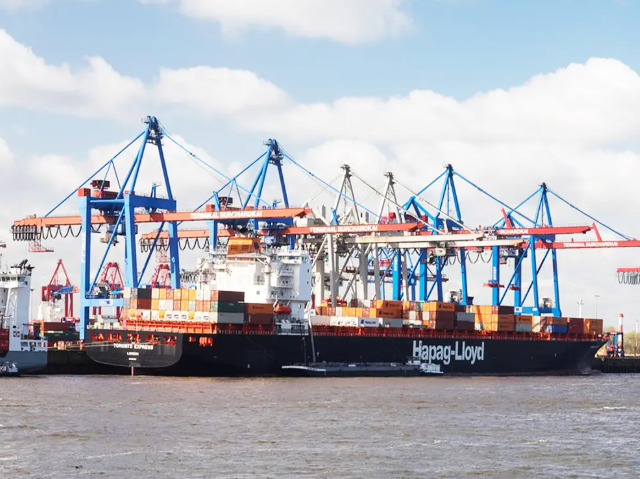Understanding Import and Export Regulations
Researching Country-Specific Trade Laws
Every nation has its own trade laws concerning the import and export of goods which one needs to know while doing international business. Such regulations are capable of exerting a powerful influence on the customs clearance, and, hence, the price and practicability of trade of some commodities. In order to gather this information successfully, I use a variety of sources (government websites, trade associations, international trading platforms). Most of them actually have the current details about certain laws, and this allows me keep myself aware of what the laws are. Then there are bilateral trade agreements, which sometimes provides lower tariffs or other minimum standards for the transactors. Further, trade compliance professionals should be consulted, in order to be fully aware of all the legal responsibilities, and minimise any risk of noncompliance.
Identifying Restricted or Prohibited Goods
Part of the import-export process is to understand what items are restricted or banned in different regions. Typically these items are detailed in a worldwide list or database that is limited in the material type that can be entered in the list or database. You can also refer to Harmonized System (HS) codes to pinpoint potential restricted items. Printing a list of such prohibited drugs and dangerous goods can help in compliance as these are usually listed international bodies and custom authorities. It is recommended to use customs brokers or lawyers for a proper verification of goods in such foreign jurisdiction. These individuals can offer the expertise you need to handle the intricate customs laws which are guaranteed to apply to any items that will be distributed.
Essential Documentation for Customs Process
Commercial Invoice Requirements
The commercial invoice is an extremely important document in the customs clearance process as it includes very important information for the clearing of the goods. The good description should be very detailed such as the name and address of both, buyer and seller, and the detailed description of the product and the Harmonized System (HS) code. International accounting standards and country requiring compliance with local regulation is required for proper customs clearance. This proactive mindset serves to avoid additional lags. Also, the value of the transaction needs to be described correctly on the invoice. Differences can result in penalties and greater attention from the customs service.
Bill of Lading vs. Airway Bill
In order to facilitate the clearance process, it is important to know the difference between a Bill of Lading and an Airway Bill. Fear not, a Bill of Lading is another term for sea freight and it is both a contract of carriage and a receipt for your goods. IT takes notes of possession and helps in passing on goods. Whereas an Airway Bill is the equivalent for air freight. Unlike a Bill of Lading, a Sea Waybill is non-negotiable and cannot be assigned. Both are important as they include important information about the shipment, as well the legal ownership of the goods. The selection of the right document is essential for a fast and smooth customs clearance.
Certificates of Origin and Special Permits
The Certificates of Origin are important documents that confirm where goods are from which can affect duties and free trade agreements. The trade agreements are based on these certificates, and the duty is reduced as a result. Some product may also need enhanced licenses especially if healing products or food products. These permits frequently require qualification by government entities, and this may delay the customs process. Knowing these needs is critical in order to perform the customs clearance in a timely of compliant manner.
Step-by-Step Customs Clearance Procedure
Filing Shipping Bills for Exports
Shipping Bill is an important document in case of export and is initially step towards the customs Clearance. It requires accurate filing because valuable information (value of goods, description of goods, and destination) is captured. As these entries have a direct bearing on duties and export regulations, it’s vital that everything is reported with 100% accuracy from the amount to the weight and classification. The importance of filing the shipping bill because it would help businesses to exercise control on the input tax credit recovery in respect of VAT, which is necessary for maintaining the liquidity of the finance. This is in addition to prevention of illegal outflows and it serves as a protective mechanism for the interest of the nation and the institution.
Submitting Bill of Entry for Imports
Bill of Entry Bill of Entry is a document to be filed with the customs department by the importer for the entry of goods into the country and the document is a legally valid document giving important information required for assessment, permission and completion of import into a country. This form should be completed very precisely and specify the type, amount and value of the goods and exactly match other documents used in the shipping procedure. If the album or artist is classified incorrectly, or if it is undervalued this can cause big problems or delays. So you don’t want to make the mistake of overlooking these details and getting them right is very important. The timely submission helps in avoiding demurrage charges, and facilitates a frictionless & swift customs clearance.
Handling Customs Inspections
Customs exams are a fact of life in the import-export business, to check for statutory correctness and regulatory compliance. Importers should be ready in advance knowing the things that shall be checked by the customs officials routinely and it has to make sure that all the papers or documents like commercial invoice, shipping bill and certificates of origin are at hand. The key during these inspections is to cooperate; if you’re honest and try to provide the information, it will tend to make it go easier. Practicing good habits like open communication, keeping an organized memo and being prepared to answer questions can make the process much more seamless. These measures will help to prevent any delays in an efficient clearance of the goods.
Managing Duties and Tax Payments
Understanding the intricacies of managing duties and tax payments is crucial for businesses engaged in international trade. I'll provide insights into key areas that ensure compliance and optimize financial efficiencies in the customs clearance process.
Calculating Tariff Classifications
The classification of goods to a specific tariff is a core issue for the application of duties to the goods that are imported. Tariff classifications, based on the Harmonized System, are used for the purpose of establishing the particular category to which particular goods are classified, thereby determining the rate of duty to apply. Properly classified goods reduce problems when clearing customs, and cuts down on costs by getting the right tax rates applied to your goods. Typical categories are consumer electronics, textiles, and machinery, and each have their own set of challenges due to differing import/export laws. Businesses can avoid costly mistakes and customs delays by knowing these classifications and working closely with customs brokers. This forward thinking attitude is crucial in negotiating the complicated world of international trade relationships.
Understanding VAT and GST Implications
VAT and GST have different functions in customs; they are concerned with customs duty and import costs, as well as with tax collection from buyers, respectively. In additional to generally being at the production stage VAT, being incurred at each stage in the supply chain; it is a consumption tax and GST is a single sales tax on goods and services. And they both contribute to the total landed cost of imports that businesses need to adjust to in order to be able to retain margins. Complier with tax law in many jurisdictions depends on staying up to date with frequent changes in law, which can alter substantially from one country to another. An understanding of these tax considerations is also critical in collecting and paying taxes to the taxing authorities consistent with international trade law. Being ahead of the tax news can facilitate smooth customs processing and reduces exposure to penalties or disruptions to the flow of imports/exports.
Understanding and applying these principles is instrumental in mastering duties and tax payment management, thereby fostering smoother international trade operations.
Post-Clearance Compliance Measures
Record-Keeping Requirements
A legal requirement that businesses cannot afford to ignore, they are required to keep detailed records of all their import and export transactions. These records are not only critical ensure that an entity complies with it’s obligations but also provide the information necessary to allow an efficient audit to take place. You will need to keep important documents such as your invoices, shipping documents, and customs declaration in an orderly fashion for a set time period. Without the ability to reduce liability exposure and achieve regulatory compliance, having both an effective recordkeeping process or system in place becomes more challenging. In addition, keeping organized documents that can be easily audited allow companies to quickly respond to any questions from customs officials so they can avoid any trade delays.
Addressing Customs Discrepancies
Early response to customs discrepancies is critical for businesses which want to stay compliant and deal with risk well. When customs see exceptions, they recommend investigating and correcting the problem quickly with lots of documents behind it. This proactive stand can prevent onerous penalties and buttress a company’s compliance standing. Companies should also add internal review and testing along with regular audits, which are the seeds of finding potential discrepancies before they bloom into problems. Not only do these prophylactic measures reduce the risk of wrongdoing, but they also build trust and confidence in global commerce.
FAQ Section
What are Harmonized System (HS) codes?
HS codes are international nomenclatures used to classify traded products, which help determine the tariff classifications for customs duties and taxes.
How can I find out if a product is prohibited or restricted in a specific country?
You can refer to global databases or contact customs brokers and legal experts to verify the status of products in different jurisdictions.
What is the difference between a Bill of Lading and an Airway Bill?
A Bill of Lading is used for sea freight and is negotiable, whereas an Airway Bill is used for airfreight and is non-negotiable.
Why are Certificates of Origin important?
Certificates of Origin help verify the origin of goods, thus influencing tariff rates and eligibility for trade agreements.
How are VAT and GST different in international trade?
VAT is a consumption tax added at each supply chain stage, while GST is a unified tax levied on goods and services, both affecting import costs and tax remittance.


